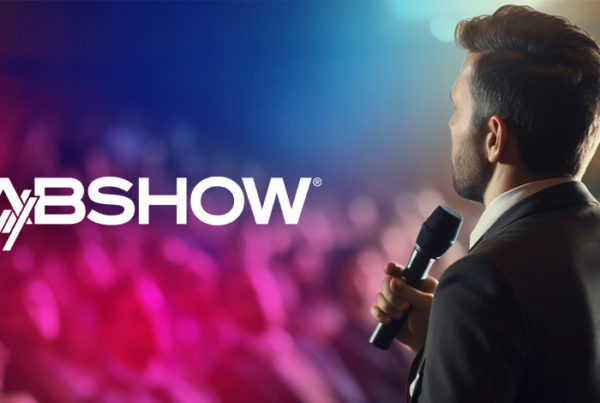Sports are an American pastime, with fervent fans who tune in every week. Gambling is another, and you no longer have to be in a casino to place a bet. Thus, merging sports and gambling is a ripe category for both digital and linear advertising. Sports betting apps have invested lots of dollars for this locally, as the legality and parameters vary by state. Now that these advertisers have sent a rush of dollars here, what’s next? Sports betting advertising, like any other segment, has trends impacting spending, the channels to use and the audiences to target.
Let’s look at what the playing field will look like in 2023.
2022 Revenue on Track to Beat 2021 Numbers
In 2021, sports betting revenues hit $4.3 billion on wagers totaling $57.2 billion, a 165% year-over-year increase. As of August 2022, revenue was $3.97 billion, a 116.2% year-over-year spike. This year’s revenue will likely surpass 2021 numbers, as it’s now prime time for betting on football, the most popular sport for wagers. While this is great news for the industry, some apps are facing profitability challenges.
Profitability Concerns Impact Ad Spending, Content and Channels
For online sports betting advertisers to pump more money into local media, they must remain profitable. A Washington Post article noted that enticing sign-up deals for bettors are a big part of the advertising content. As a result, the most notable apps, FanDuel, DraftKings, BetMGM and Caesars Sportsbook, have offered deals so good they aren’t making much money. The Washington Post noted that only FanDuel had a quarterly profit, and it currently controls around 47% of the market share.
The consensus is that the top-tier apps will continue to spend on advertising. However, the promotions may be less generous. Caesars is at the lowest share of the big four and has been cutting back, canceling $250 million in advertising and marketing.
Overall, the shift in how the apps market is evolving beyond customer acquisition. They need people to stay and keep spending. As a result, these advertisers will look for more targeted ways to retain players, achievable through digital advertising. These tactics haven’t always been available in legal markets, but new options are emerging, which means broadcast and media sellers can capture more dollars in local spending.
Local Ad Spending Will Grow Through 2024; California Could Be a Huge Part of This
BIA forecasted local ad spending for sports betting would hit $1.8 billion in 2022, an 80% year-over-year increase. Advertisers are pushing lots of ad dollars to local markets. For example, three sportsbook apps were the top advertisers on broadcast radio for the opening week of the NFL season.
Local ad spending is buoyed by a jump in the number of gamblers for football, which rose to 46.6 million, a 3% growth from 2021.
For 2023, BIA projects a slight bump to $1.9 billion, reaching $3 billion by 2024. The larger jump in 2024 may have factored in California legalization, which was on the midterm ballot. However, both measures to legalize sports betting failed, which means states with legalization won’t lose any money to this state.
Saturation of the Ad Landscape Should Spur New Ad Content
With all the money these advertisers are spending on the local and national levels, it’s easy for consumers to respond with ad fatigue. They see the same messages repeated and don’t find them compelling. Looking at the metrics will answer the question about messaging impact. Digital is easy to track. Linear is harder but possible to measure. Including QR codes in TV commercials is one way to calculate conversions. For radio, a unique promotion code or URL would reveal the outcome.
With a very noisy landscape, sports betting advertisers may need to tweak messaging to:
- Target a specific demographic, like female bettors, as the market skews male. It’s a growing segment, with 6 million women betting on apps in the U.S. in 2021, a 115% increase.
- Focus on retention with exclusive deals for existing users rather than new ones.
- Sell the experience of betting on the app and the most attractive features (e.g., micro-betting of individual moments in the game not related to the final score).
Sports Betting Advertising Using Digital Tactics Will Have More Options
Digital advertising of sports betting isn’t available on every DSP (demand-side platform), as it’s considered a restricted category. New options are now available for executing digital tactics at the local level compliantly.
Combining the targeting capabilities of digital with the reach of linear TV and radio delivers better results for advertisers. As noted, the apps are focusing more on retention than customer acquisition. Digital gives them a way to do this based on demographics, preferences and previous digital interactions.
If your broadcast or media company can cover all tactics, you will likely get a bigger wallet share. For digital, you could even win an advertiser’s entire digital budget.
Take the Field, and Win More Sports Betting Advertising in 2023
Keep these trends in mind as you re-engage current advertisers and pursue new ones. If you approach these companies with data and strategies to help them reach their goals with linear and digital advertising, they’ll be more responsive to spending more with you. With 2023 being a year of no political ad boost, you need new ways to improve linear revenue and expand digital. Sports betting advertisers could be vital to meeting budgets in the year ahead.
Find out how we can help you make this possible with digital sports betting ads now available on Marketron NXT. Request your demo of the platform today.







